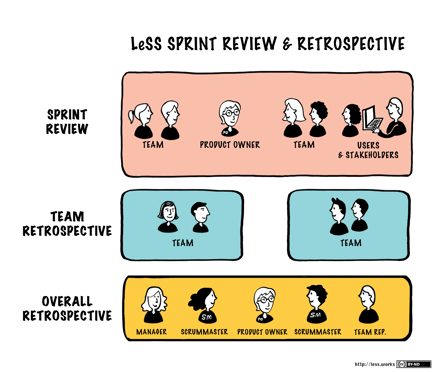'Better' is such a unique word. You can always be-better, always do-better, always know-better henceforth become better.
This blog is intended to share the tips and tricks from my experience to make your already good going retrospectives to be better.
To set the momentum, let's start with “Why retrospectives”.
Sprint retrospectives are the moment of awareness where the teams and stakeholders pause-introspect-identify-plan.- It helps to step aside and bring in awareness. To slow down with an open state of mind. Introspection helps in becoming self aware and look for answers for betterment. It is always an ongoing activity with no one right solution which fixes all problems.
- Introspection is a group activity where team members discuss to agree-disagree, exemplify, raise concerns , dig out solutions with common intention to improve and be better in upcoming sprints.

Below I have elaborated various techniques which when applied can certainly help amplify value derived from retrospectives.
- Active participation from every team member during the meeting
Not every team member would come out vocally during retrospectives. Some people are reluctant to express their ideas fearing that it will be rejected or counter-questioned at first level itself. This is irrespective of the work done by them.
Tip: Try using “Yes, and..” in the conversations more frequently. When applied effectively, it can prove really advantageous. After your team member has shared their point of view or idea , you start your statement with “yes” instead of a no or a but (acknowledging their thought process) and then using “and” followed by your idea.
Practicing this approach , helps bring openness, respect, acceptance in the conversation which enables the confidence of the less talkative people. - Sticking to the subject
It is very common and easy for the retrospective conversations to divert from the main agenda as a result of which the crucial time of the meeting is wasted and no effective actions are identified.
The main responsibility lies in the hands of the scrum master to be aware enough not to indulge in such situations and precisely use tricks to steer the conversation to the agenda.
Some of the tips to deal with such scenarios are-- The scrum master should write the current topic of discussion on the board so that it’s visible to everyone. Once, the topic is decided, jot down the key pointers within the topic as well.
- In case any moment slippages are observed, bring back the team’s attention to the topic on the board. Ask them relevant questions around the subject like, what’s next on this subject, action item for the subject, moving on with the next topic, etc.. The idea is to involve the team in the subject by visible structuring and not just by words.
The whole idea is to involve the team in the subject by visible structuring and not just by words. - Educate and enable every team member to raise a flag when the conversation gets diverted from the agenda. Empower the teams to do so.
- Once all the necessary points have been highlighted for discussion, roughly divide the total meeting time amongst all the sub-topics. This practice is called - timeboxing.
- For instance, if there are 5 topics to be discussed in 45 minutes of the meeting, then each topic will be dedicated nine minutes (no hard boundaries but grey boundaries ).
- Do keep the track of time. Also, as the time nears to 9 minutes, remind the team of the time left, and ask relevant questions to help them identify action items.
- The idea is not to force the team to finish the conversation in 9 minutes but to bring the consciousness of the time and priority subjects in the team’s mind. This makes the team self-aware of the “time factor”.
- List down out of scope topics identified during the discussion and inform the team that they will be taken up separately in a discussion.This builds team’s confidence in the scrum master and help to keep the discussion on the main subject during the retrospective
- The scrum master should write the current topic of discussion on the board so that it’s visible to everyone. Once, the topic is decided, jot down the key pointers within the topic as well.
- Widespread Retrospective agenda
Even though retrospective cover points suggested by the team members (which a scrum master has no control over) Scrum masters can ensure that the retrospective points are across different categories of the project.
For example, pointers should be around various processes from technical, specific requests, to clients, etc.
Tip: Scrum master can use a platform like Confluence, Retrium, Google sheets, etc to
List out different categories and then ensure that team members share their retrospective points there before the meeting starts (thereby allowing otherwise data gathering time to the real-time retrospection /discussions).
Referential Retrospective Form-
Categories\Discussion Things that went well Things that need to be worked upon Processes Technology Client Special Requests Team Other
Wrapping up
I hope that the techniques suggested in this article opens new pathways for you and enables you to deal with challenges more creatively.
I believe that Intention to be better needs to be backed up by Persistence and decision making. Right amalgamation of these practices will definitely multiply efficiency and value multi fold.
Our Services
Customer Experience Management
- Content Management
- Marketing Automation
- Mobile Application Development
- Drupal Support and Maintanence
Enterprise Modernization, Platforms & Cloud
- Modernization Strategy
- API Management & Developer Portals
- Hybrid Cloud & Cloud Native Platforms
- Site Reliability Engineering




